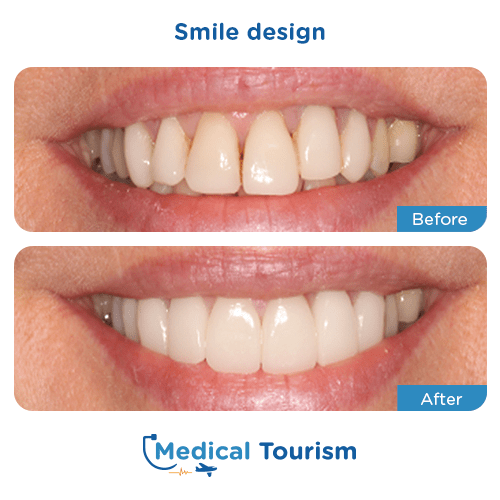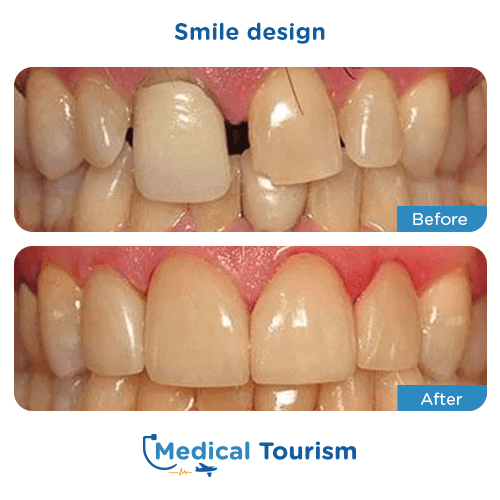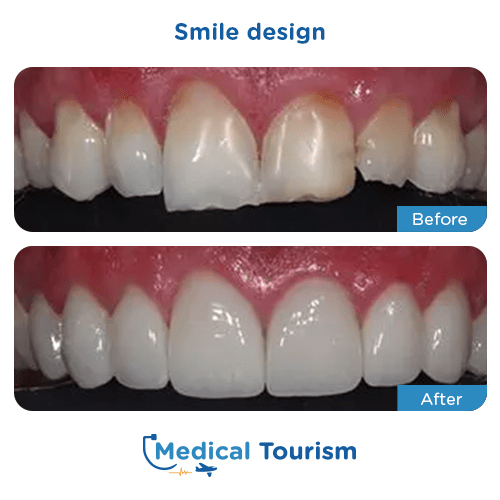The best board-certified doctors abroad
Smile design information and international destinations
A smile design is a cosmetic dental treatment aimed at enhancing the look of the teeth and overall smile. The objective of a smile design is to achieve a smile that appears natural and visually appealing, harmonizing with the person's facial features and individuality.
The process generally includes a thorough assessment of the teeth, gums, and adjacent structures, along with a conversation with the patient to ascertain their objectives and preferences regarding their smile. Digital imaging software may be employed by the dentist to generate a virtual representation of the patient's smile and make necessary modifications to the teeth and gums in order to attain the desired outcomes.
Contact the best dental clinics abroad for smile design!
Benefits
Better oral health
Increased self-confidence
Enhanced teeth appearance
Personalized treatment approach
Increased self-confidence
Enhanced teeth appearance
Personalized treatment approach
Smile design
Procedure:
1 - 9 days
Cleared to fly: Same day
Cleared to fly: Same day
After surgery
Out of town patients’ do not require a follow-up, but smile design do require 3 - 4 visits to finish the procedure. Your dental surgeon will provide the necessary information. Patients are clear to fly on the same day of the smile design.
Note: Consult with your dental implant specialist for follow-up or additional care after the procedure upon your return to your home city. Some patients may be candidates for immediate implant loading.
Before and after
View before and after pictures from real patients.
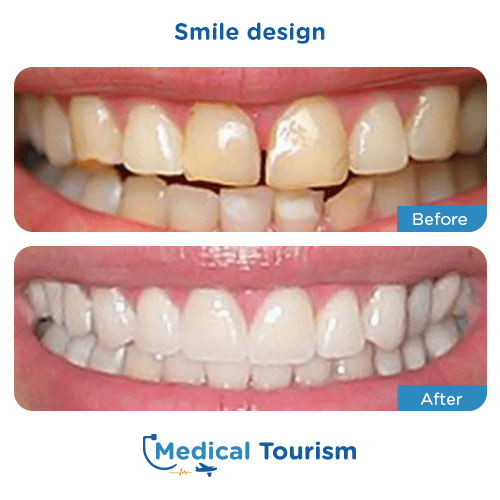
View more
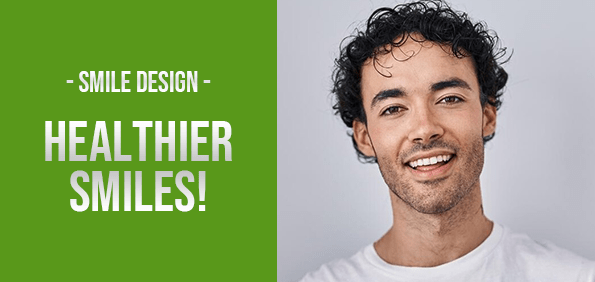

Locations
Select the city of your choice to seethe doctors profile.
Dr. Nicolás M. Belloni
View more

Smile design frequent questions
Get answers to our most frequently asked questions and what to expect after the procedure.
Who is eligible for a smile design?
People who are dissatisfied with the appearance of their smile and have good oral health are typically suitable candidates for a smile design. It is crucial to consult with a skilled and knowledgeable cosmetic dentist to determine the most effective treatment approach for achieving the desired results.
What are typical treatments employed in a smile design procedure?
Common treatments utilized in a smile design procedure often encompass teeth whitening, dental bonding, porcelain veneers, orthodontic treatment, and gum reshaping. These procedures aim to enhance the appearance of the teeth and create a more harmonious and attractive smile.
What is the duration of a smile design procedure?
The duration of a smile design procedure depends on the requirements and objectives of each patient, as well as the specific treatments employed. While some smile design procedures can be accomplished in a single session, others may need multiple appointments spread across several weeks or months to achieve the desired results.
Is a smile design procedure painful?
The majority of smile design procedures are typically painless, with local anesthesia or sedation dentistry employed to ensure the patient's comfort throughout the process.
How long do the results of a smile design last?
The duration of the results obtained from a smile design procedure varies based on individual factors such as oral hygiene practices, the specific treatments performed, and the overall oral health condition. By maintaining good oral care and following dentist's recommendations, the results of a smile design can be preserved for an extended period, often lasting for several years.
Disclaimer: This information does not reflect the medical advice from our clinics. All cases are different and this treatment may not suit you. Always refer to a medical professional with the certification and experience. All of our physicians are fully qualified to perform these procedures. For more information and diagnosis contact one of our top specialized clinics.
In all medical procedures, there are chances of complications, the specialist will provide you detailed information about the risks of the procedure, talk to the specialist directly.
In all medical procedures, there are chances of complications, the specialist will provide you detailed information about the risks of the procedure, talk to the specialist directly.
